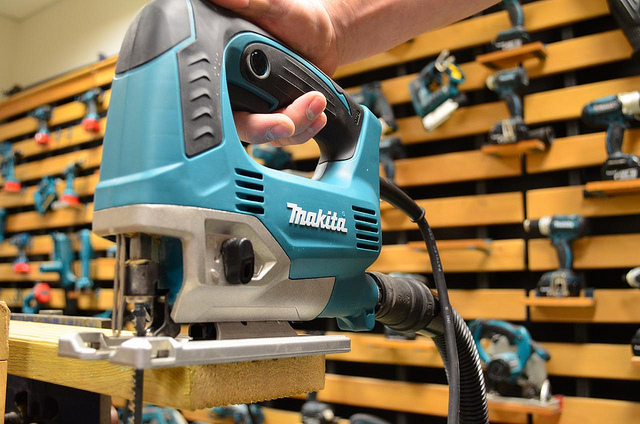Jigsaw Safety Tips that Every Worker Should Follow

Does your job require you to operate a jigsaw on a regular basis? Also known as a scroll saw, the jigsaw is a powerful tool with a motorized, reciprocating blade. It's used extensively in the construction and manufacturing industry, as it allows workers to cut through otherwise hard materials like plastic and wood. While most modern-day jigsaws have built-in safety mechanisms to reduce the risk of injury, workers should still take certain safety precautions when using this tool.
Protecting Against Shock
Jigsaws are not intended for use in wet environments. Electrical power tools such as jigsaws may shock the operator when exposed to water or even airborne moisture. This is why it's critical that workers only operate a jigsaw in a dry, covered environment.
Protecting Against Fire
In addition to shock, there's also a risk of fire when operating a jigsaw. Most jigsaws are intended for use in a RCB circuit breaker, allowing the circuit breaker to automatically shut off power in the event of a power surge. If it's plugged into a non-RCB circuit, the excessive flow of power may spark a fire or shock the operator.
Protecting Against Lacerations
Among the most common injuries associated with jigsaws is lacerations. This usually happens when the operator places his or her hand too close to the reciprocating blade, causing it to slice into their skin. To reduce the risk of lacerations, workers should only operate a jigsaw if it has a sharp blade (dull blades are more prone to kickbacks). Furthermore, workers can wear Kevlar-lined gloves to help protect against lacerations.
Other safety tips to follow when operating a jigsaw:
- Familiarize yourself with the user's manual. If you are unable to locate the manual, contact the manufacturer to request a copy.
- Wear the appropriate personal protective equipment (PPE). This may include impact resistant-eyewear, steel-toed boots, and a dust mask. Keep in mind that employers are responsible for providing workers with PPE.
- Do not attempt to force the jigsaw through hard, stubborn material. If the blade won't cut, reverse it and try again.
- Keep the blade and surrounding components of your jigsaw well lubricated.
- Other workers should be warned to stay away from the jigsaw while it's in use.
- Use caution not to trip over extension cords connected to your jigsaw.
Recent Posts
-
Fire Safety in the Workplace: What You Need to Know
What steps are you taking to prevent fires in your workplace? According to the U.S. Occupational Saf …Aug 23rd 2023 -
Is It Safe to Go Jogging With a Cold Infection?
If you're suffering from a cold infection, you might be wondering whether it's safe to go jogging. T …Aug 22nd 2023 -
5 Safety Tips to Follow When Using a Powder-Actuated Tool
Powder-actuated tools are commonly used to join materials to steel and concrete. Also known as Hilti …Aug 20th 2023



